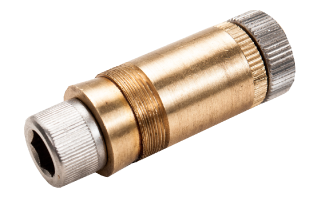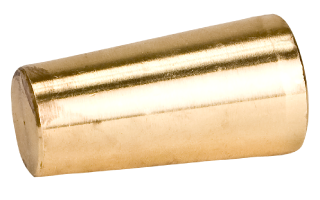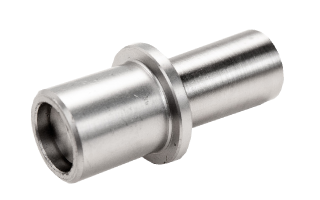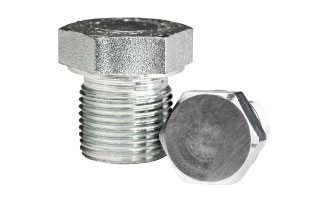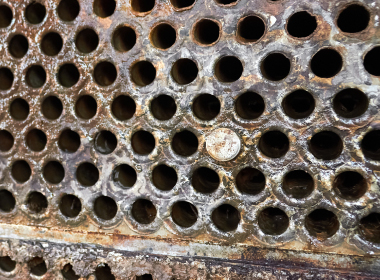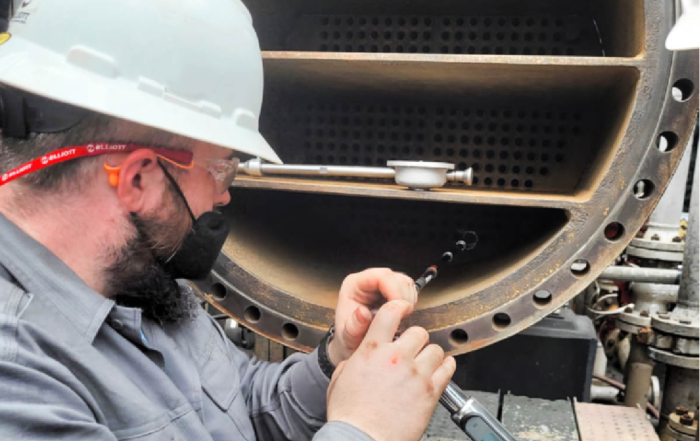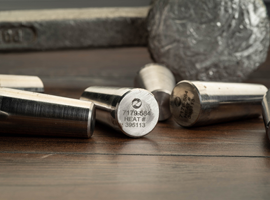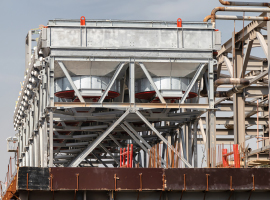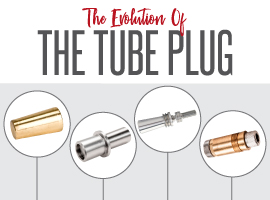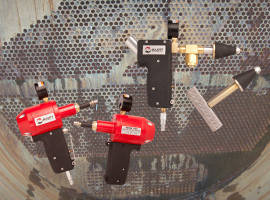Tube Plugs
We offer a variety of tube plugs for use in heat exchangers and boilers to keep them up and running. Whether it’s mechanical tube plugs or one-piece plugs, our products are made with quality materials so they are durable and can withstand different pressure requirements.
Elliott’s Mechanical Tube Plugs create a positive mechanical contact seal in excess of 6,500 PSI (448.2 bar), making them ideal for high-pressure applications.
-
Tube Size: 0.410” to 1.000 (10.4 to 25.4mm) ID
-
Maximum Pressure: 6,500 PSI
-
Materials: Brass, Steel, Stainless, Titanium, and more.
-
ASME PCC-2-2015 Compliant
-
Comprehensive Testing and Quality Assurance Standards.
-
Easy To Install- No Hydraulic Equipment Needed.
Elliott’s One-Piece Tube Plugs cover a wide tube OD range, making them ideal for sealing leaky tubes in both heat exchangers and boilers.
-
Tube Size: 0.375" to 3.000" (9.5 - 76.2mm) OD
-
Maximum Pressure: 150 PSI
-
Materials: Brass, Carbon Steel, Stainless Steel, Aluminum, Monel, and more.
Elliott’s Two-Piece Tube Plugs offer more sealing due to the tapered pin design. This gives even expansion to the ring and a long contact to the seal.
-
Tube Size: 0.375” to 1.250 (9.5 - 31.8mm) OD
-
Maximum Pressure: 150 PSI
-
Materials: Brass, Carbon Steel, Stainless Steel, Aluminum, and more.
Header plugs & gaskets are designed for use in air cooled heat exchangers. Simply thread the plug and gasket into the plug hole of the header or water box before putting the vessel into operation.
-
Plug Diameter: 1.125" to 1.375" (28.6 - 34.9mm)
-
Materials: Carbon Steel, Stainless Steel, and more.
Suggested Articles
Strategies for Successful Heat Exchanger Tube Plugging
Plugging leaking tubes in heat exchangers is a critical maintenance task. However, this seemingly straightforward procedure can present a multitude of challenges that can impact both the success of the plug and the overall maintenance process. These challenges include creating a secure seal due to suboptimal tube conditions, limited reach and accessibility, and the availability of suitable plugging materials.
Installing Mechanical Tube Plugs
When needing to use and install mechanical tube plugs, having the correct tools for the job can make it easier and quicker to get the job. Below are step by step instructions to help overcome this challenge.
What’s The Deal With SA-105?
Welding has become fairly common practice in pressure vessel fabrication and maintenance. From tube ends to plugs, welding can provide additional strength or sealing coverage if done correctly. When it comes to tube plugging, many customers are facing questions about plug materials and special requirements to ensure vessel specifications are met. In this article we will discuss the changes to the ASME code, material types and nomenclature, and impacts to the welding process.
5 Tips For Easier Air Cooler Maintenance
Similar to a shell and tube heat exchanger, air coolers are made up of stacked finned tubes with header or water boxes on either end of the vessel. While air cooler maintenance can be challenging, there are a few tips and tricks that can help make the process easier.
The Evolution Of The Tube Plug
There have been many variations of the tube plug over the years in an effort to achieve maximum sealing area and to control the method in which it is installed. While each of these plugs are still commonly used today, they were designed to overcome various challenges operators have had over the years.
Why Should Tubes Be Cleaned Before Testing?
Every tubed vessel requires the surface of the tubes to be clean and scale-free to function efficiently and to ensure accurate testing when searching for tube leaks.

